Finding Your Movement Deficits
The first step in creating a movement based lifestyle is to begin to identify your current deficits. There are several patterns that every person, regardless of their age, sex, or physical fitness level should be able to do. We like to call these fundamental patterns and believe that they form the basis for a healthy movement lifestyle and the foundation for more complex functional skills.
These fundamental patterns include diaphragmatic breathing, spinal stabilization, pushing, pulling, bending (hip hinging), and rotation. To assess these patterns, we can perform some simple tests. From there we can identify some strategies for improving movement, as well as additional functional tests to examine more complex patterns.
Lets start with breathing.
The Most Fundamental Movement Pattern
The act of breathing, taking air into the lungs, is a combination of conscious and unconscious actions. It is one of the only movement patterns that gives us both direct control, but also goes on unending without any thought. Unconscious control is provided by the mind through the autonomic nervous system. This system regulates all kinds of automatic actions in the body, including digestion, salivation, swallowing, heart rate, blood pressure, breathing, and the fight or flight response. Breathing gives us a window into some of these automatic functions, and a way to work to improve our overall well being. It also plays an important role in creating normal muscle activation and movement patterns.
Breathing can be classified into two general types; thoracic breathing, and diaphragmatic breathing. Both have their place in everyday life, but diaphragmatic breathing is by far the most efficient. It also provides added benefit through its contribution to muscle activation patterns. When the diaphragm contracts to bring air into the lungs, it also helps activate the local core stabilizing muscles by increasing the intra-abdominal pressure. This activation improves core stability, and creates a good muscle activation pattern that starts with the core (Bliven, 2013).
To check your breathing, lie on your back with your knees and hips bent, feet flat on the floor. Place one hand comfortably on your upper chest, and the other on your stomach. Close your eyes and breath normally. Don’t consciously think about creating one type of breathing or another; just feel where the breath is coming from.
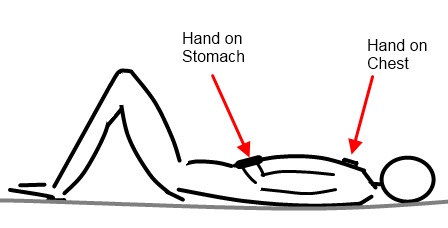
With normal breaths, you will feel a slight rise and fall of either your chest or your stomach. Take in a big breath, and that movement will be exaggerated. If you are breathing with a thoracic pattern, you will notice your chest moving much more than your stomach, and you will feel your ribs moving up toward your head. If you are breathing with a diaphragmatic pattern, your stomach will rise and fall and your chest will move very little. On deep inspirations, your chest will rise and expand outward along with your stomach.
Thoracic pattern breathing has been linked to a variety of health conditions, including chronic, non-specific low back pain (Anderson, 2016). These patterns can also contribute to increased muscle tone and spasm in the upper shoulders and neck, leading to chronic stress of these tissues. Learning to breathe with a diaphragmatic pattern can make a huge difference in your overall health and well being.
Toe Touch (Multi-Segmental Flexion)
This test examines fundamental patterns related to spinal stabilization, bending, pushing, and pulling and provides a good estimate of overall movement capacity.
Several factors can play a role in not being able to touch the toes, including flexibility of the plantar fascia, calf, hamstrings, back extensors, and neck muscles. Core stability and muscle activation patterns can also play a role. This pattern looks at the overall mobility of the posterior soft tissue structures. If you cannot touch your toes, you likely have imbalances that need to be addressed.
To perform, stand with your feet together and simply bend forward as far as you can, keeping your knees straight. As you do this, notice where in your body you feel tightness or restrictions. Is it in your calf, hamstrings, lower back, or neck? What does it feel like? Is it painful, tight, or burning? Can you touch your toes?
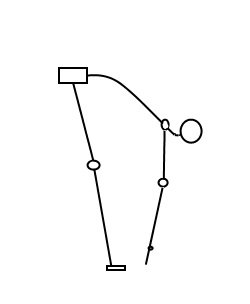
This simple task tells us a lot about how your body is functioning. It lets us know if you have mobility restrictions in any the soft tissues of the posterior side of the body, like the calf, hamstrings, and low back, or restrictions in the joints of the ankle, knee, hip, and lumbar spine.
Back Extension (Multi-segmental Extension)
This test examines the overall mobility of the anterior or front soft tissue structures. Restrictions are very common, and can be due to tightness of the quadriceps, hip flexors, abdominals, thoracic spine, shoulder, and neck. These structures help to balance out those on the back, and so restrictions often place more stress on these tissues.
To perform, stand with your feet together and hands overhead. Arch back as far as you can, keeping your elbows near your ears. As you do this, you may feel tightness or restrictions. Pay attention to what you feel. Are you tight in your hips, shoulders, or back? Does it cause pain, and if so, where? If you can have someone watch you do this movement, they should see your pelvis shift forward over your toes, your shoulder blades clear your hips, and your hands extend beyond your shoulder blades.
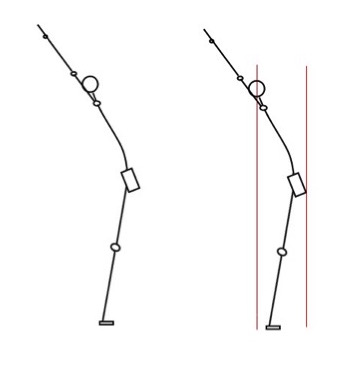
The back extension task looks at the front side of the body, and includes possible mobility restrictions at the trunk, hip, leg and ankle, as well as flexibility of the soft tissues and muscles.
Cross Over (Segmental Rotation)
This test evaluates the ability to rotate. Specifically it looks at mobility of the upper spine, the muscles of the chest, lower back, and hips. Restrictions with this pattern are commonly caused by hip tightness, low back tightness, and shoulder muscle tightness.
To perform, lie on one side with your hips and knees flexed to about 90 degrees and arms extended. Keeping your knees together and on the floor, rotate your upper body as far as you can, trying to touch both shoulders / arms to the floor.
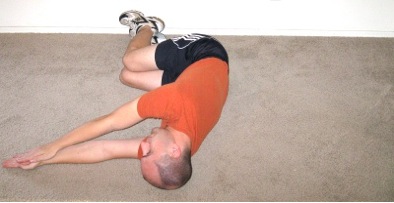
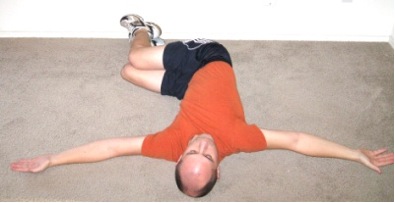
Together, the three assessments will give you an idea of the mobility restrictions you may have. Your first goal in creating a movement centered lifestyle is to re-establish normal mobility and fundamental patterns. We will accomplish this through a series of stretches that will improve the toe touch, the back extension, and the cross over.

REFERENCES:
Bliven, K. C. H., & Anderson, B. E. (2013). Core stability training for injury prevention. Sports Health: A Multidisciplinary Approach, 5(6), 514-522.
Anderson, B. E., & Huxel Bliven, K. C. (2016). The use of breathing exercises in the treatment of chronic, non-specific low back pain. Journal of sport rehabilitation, 1-17.
Products linked from our website are items we use in our house every. single. day. We recommend them because they provide value and contribute to our Paleo Charmed Life. If you click through our links and make a purchase, we earn a little cash, which helps us keep bringing new information to you online.
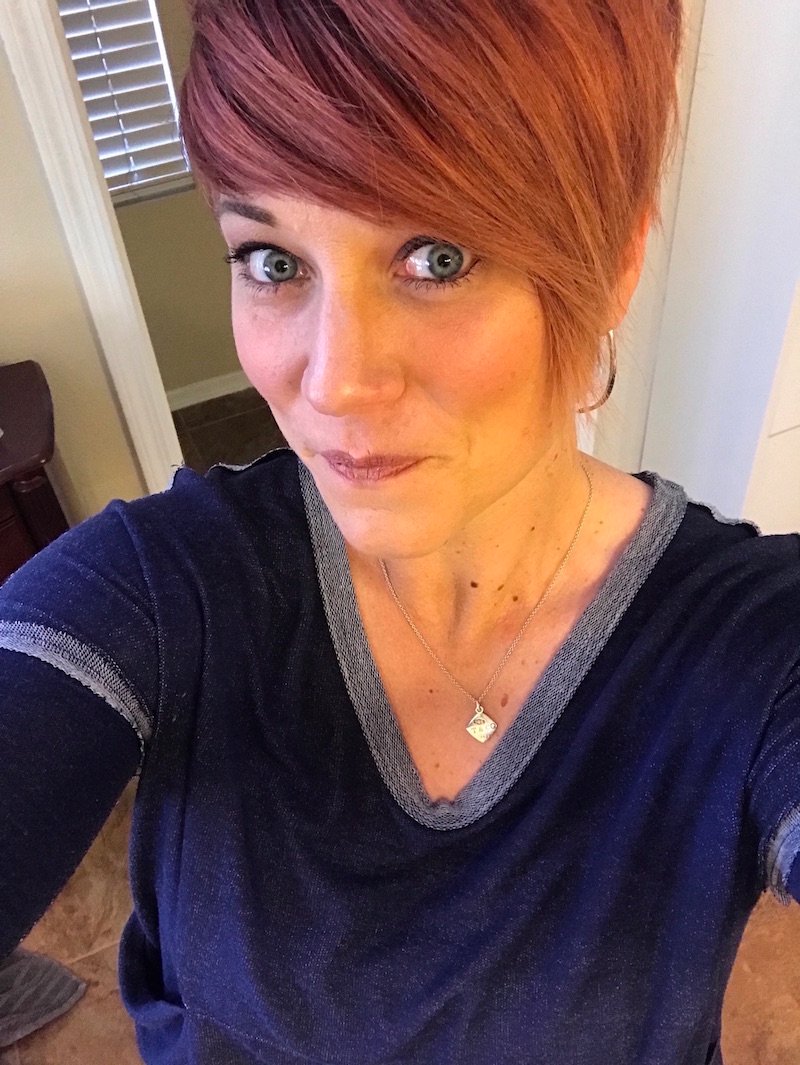




New! Comments
Let us know what you think!